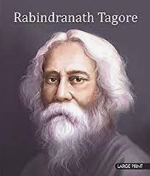MANIPURI
MANIPURI
The manipuri dance form named after its region of origin,'manipur' is also known as 'jogai'. The origion of manipuri dance is mythological which is traced to the celestial dance of siva and parvati all along with 'Gandharva' in the valley of manipur.
It was traditionally performed as a dance- drama on devotional songs. Manipuri is a combination of two culture, india and south-east asian.
THEMES- Mostly influenced by hindu vaishnavism themes.
The dance gained fame after the start of vaishnavism.
Manipuri showcases the love between radha and krishna though raaslila.
Manipuri also includes themes related to shaivism and shaktism and regional deities.
shavism and shaktism
Manipuri emphasises on devotion. It includes both tandav and lasya in which major emphasis is given to lasya.
TANDAV- Manipuri depicts themes of shiv, shakti or krishna as warrior.
TANDAV- Manipuri depicts themes of shiv, shakti or krishna as warrior.
LASYA- It includes love inspired stories of radha- krishna.
PERFORMED DURING FESTIVALS- Lai haroaba is one of the main festivals still performed in manipur which has its roots in the pre-vaishnavite period.
MANIPURI DANCE HAS A LARGE REPERTOIRE- However, the most popular forms are the Ras, the Sankirtana and the thang-ta.
There are five principla ras chances of which four are linked with specific seasons, while the fifth can be presented at any time of the year. In manipuri ras, the main characters are radha, krishna and the gopies.
MANIPURI RASLILA- There are three types of this-------------------
TAL RASAK- It is accompanied by clapping.
DANDA RASAK- The synchronous beat of two stricks where dancers position creates geometric patternes. MANDAL RASAK- The gopis make a circle while krishna attains the center.
MUDRAS AND MOVEMENTS- Nagbandha mudra which means the body connected through carves in the shape of '8' is a significant characteristic of this dance.
The expressions used in manipuri are from the poetry of jayadev, vidhyapati, chandidas, govindadas and gyandas that may be in sanskrit, maithili, brij or any orther language.
Movements- The beautifully soft and graceful dance form, manipuri has significant movements of hands and upper body. A curvy body structure with a pleasant smile, decorative, shiny costumes, and ornaments, manipuri is indeed a mesmerizing dance form. Another uniqeness of this dance form is that,
While ghunghroos (bells) glorify the classical dances of india, they are not worn in manipuri.
THE COSTUMES AND MAKEUP OF MANIPURI DANCE- The female dancers wear decorative barrel- shaped drum like long stiff skirt till bottom with. Decorative embellishments.
Dark colored velvet blouse covers the upper part of the body and a traditional veil is worn over hair that falls gracefully over the face.
The male dancer adorn them selvers with dhoti kurta, white turban, a folded shawl over the left shoulder and the drum strap over the right shoulder.
The costume for the characterr of lord krishna is yellow dhoti, dark velvet jacket, and crown of peacock feathers.
MUSIC AND INSTRUMENTS- There is manipuri music used in manipuri dance.
MUSIC AND INSTRUMENTS- There is manipuri music used in manipuri dance.
instruments are- Drum, flute, horns, tambura, esraj, cymbals, and mridang are some of the major instruments used in manipuri dance.
PATRONS- Rabindranath Tagore introduced this dance in shantiniketan thereby brought back the prominence of this dance form in modern times.
Rabindranath tagore is the greatest patron of this dance form .
PATRONS- Rabindranath Tagore introduced this dance in shantiniketan thereby brought back the prominence of this dance form in modern times.
Rabindranath tagore is the greatest patron of this dance form .














Comments
Post a Comment